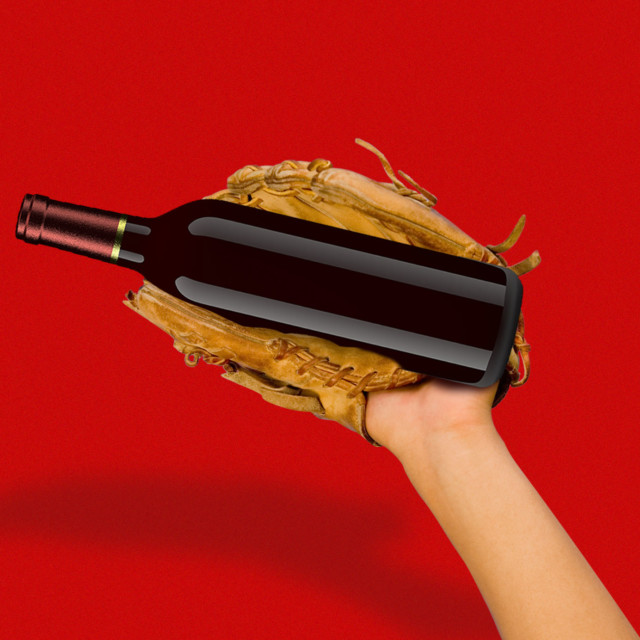Today should be a purely joyous day for baseball fans: The 2022 Major League Baseball season is getting underway, with optimism — or at least foolish hope — abounding from coast to coast. A lengthy lockout imposed by the owners on the MLB Players Association has ended, and while the start of the season had to be pushed back by a week, no games were lost. Yet throughout the baseball world, there’s a sense that the sport is on the decline, most acutely among millennials and Gen Zers.
As a lover of both wine and baseball, two industries that are struggling mightily to connect to a younger generation of potential consumers, I’m struck by their shared shortcomings: Oversaturation, a lack of access, and an obsession with the past.
The issue of oversaturation for wine boils down to the existence of an ever-growing array hailing from every corner of the globe, made from hundreds of different varieties at every price point. While this abundance can be great for those who truly enjoy exploration and discovery, it’s also undoubtedly confusing for many would-be wine drinkers, driving them toward more easily understood categories like hard seltzer or spirits. For baseball, the issue is more that the 162-game schedule means that no one game can really be all that impactful on a team’s fortunes for the year. As Aaron Goldhammer, radio host and producer at ESPN Cleveland explains, his listeners live and die with each Cleveland Browns game, but have little interest in the local Major League team, the Cleveland Guardians, at all unless they’re extremely good or comically bad.
Access plays a role in this as well: Wine comes with at least the perception of a higher cost of entry, as well as an expectation of mastery that the industry has struggled to move past. Additionally, many highly acclaimed wines are made in small quantities and heavily allocated, in addition to carrying hefty price tags, making them functionally unobtainable to all but the most well-connected and deep-pocketed collectors. Baseball’s rules might not technically be more complicated than those of basketball or football, but the intricacies of the sport definitely pose a similar barrier to entry. Beyond that, comparatively few MLB games are broadcast to a national audience when compared to the NBA or particularly the NFL, meaning that even truly breathtaking talents like pitcher/outfielder Shohei Ohtani of the Los Angeles Angels or young superstars like Fernando Tatis, Jr. of the San Diego Padres or Vladimir Guerrero, Jr. of the Toronto Blue Jays are rarely seen on TV.
Lastly, both baseball and wine are tragically obsessed with their pasts. Aged wine is considered by both experts and novices to be the pinnacle of wine experiences, yet the sheer scarcity of those bottles means that most people never even get to experience decades-old bottles of Bordeaux, Burgundy, or Barolo. Baseball, too, is obsessed with ancient things: To wit, ESPN recently released its list of the top 100 MLB players of all time, which featured just seven active players, only two of which (Bryce Harper and Mike Trout) could reasonably be argued to be in their prime. As a point of comparison, the NBA announced its 75th anniversary team earlier this year, featuring 11 active players out of the 75 selected, six of whom were named among the league’s top 15 players in the 2021 season.
More to the point, only one of the top 10 players on ESPN’s list — Barry Bonds — has played in a game since 1976, years before the oldest millennial was even born. Wine geeks also love to sing the praises of vintages decades or centuries old, from which almost no wines even still exist, and those that do are as likely to be museum pieces as actually enjoyable to drink. This obsession with old wine is off-putting in several ways: It contributes to the notion that wine is only for the wealthy, and it alienates the many wine drinkers who genuinely prefer the flavors and experience of more youthful wine. It’s not dissimilar to how certain baseball people — coaches, broadcasters, and even some older players — frown upon younger players who show their joy and emotion for the game by flipping their bats when hitting a home run or by celebrating when making a great play.
The sad thing for both wine and baseball is that it doesn’t have to be this way. “I don’t think you have to know a lot about baseball to watch Shohei Ohtani pitch or hit,” explains David Roth, co-founder of the online sports and culture site Defector. “You don’t need to understand the fine points of how (New York Mets pitcher) Jacob DeGrom has tweaked his release point, or be able to identify the difference between a slider and a fastball. You can just see that the ball is moving and cool things are happening and get something out of it.” Wine, too, could embrace this approach more, and, to be fair, some small segments of the industry are trying. It’s almost tragically comical that baseball and wine have never been better, and yet both industries are undeniably failing to connect to the next generation of fans in a way that will ensure their long-term health.
